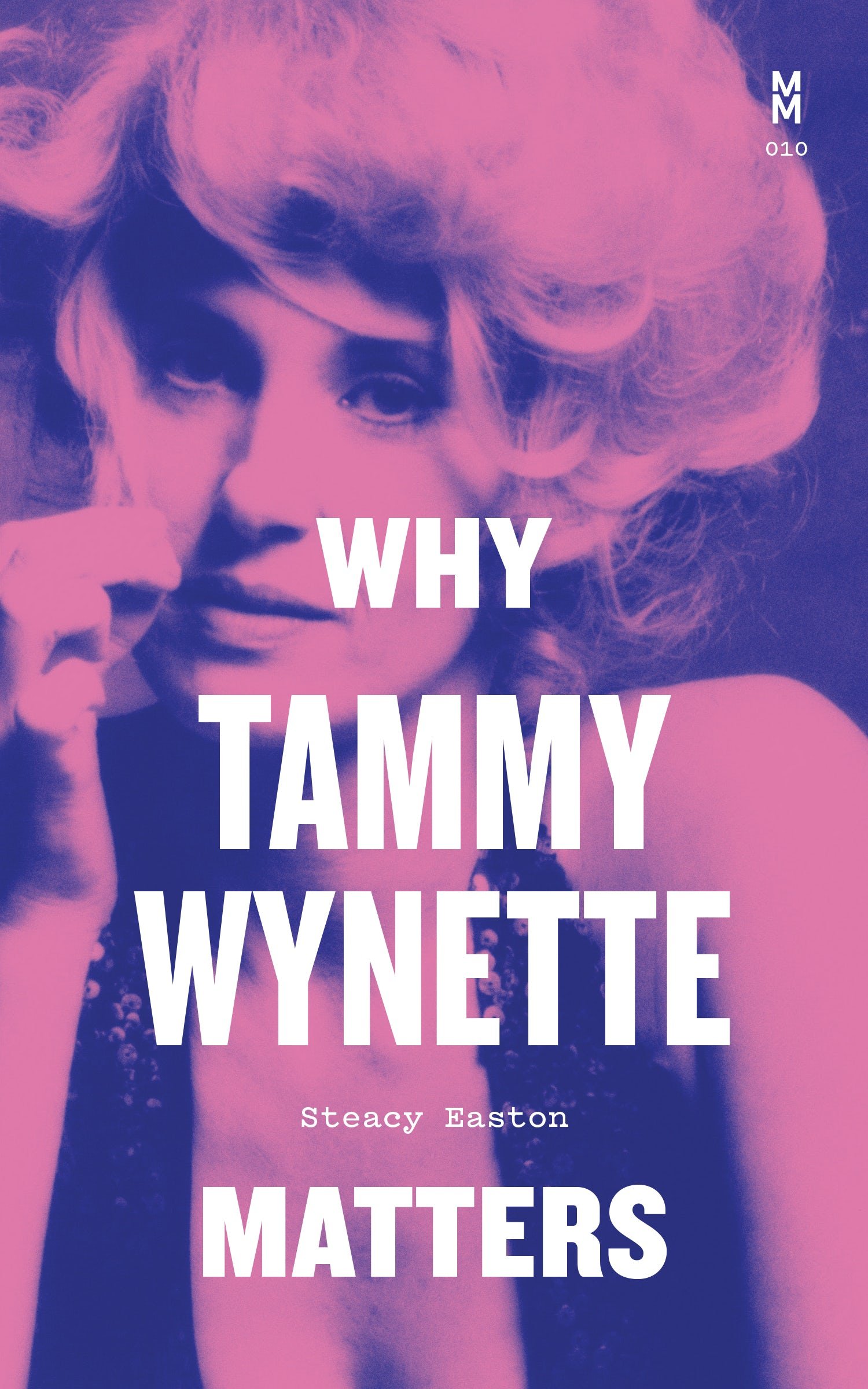Book Review: Why Tammy Wynette Matters by Steacy Easton
Some 25 years after her untimely death at just 55, Tammy Wynette is having her moment. First there was George & Tammy, the ace biographical miniseries on her tumultuous entanglement with (and brief marriage to) esteemed crooner George Jones, with the pair sympathetically portrayed by high-wattage stars Jessica Chastain and Michael Shannon.
Now comes Why Tammy Wynette Matters (University of Texas Press), Hamilton, Ontario-based author Steacy Easton’s excellent biography-slash-rumination on the late country singer, which looks at Wynette in particular — and country music more broadly — from an alternately academic, gender-based, and super-fan point of view.
It’s a fascinating and novel perspective, one the PhD student in critical disabilities studies at York University —who answers to the pronouns they/them/their — brings to bear on a subject Easton contends has not got her due compared to contemporaries like Dolly Parton, Loretta Lynn, or Jones himself. Luckily for Wynette, Easton has set their sights on righting that wrong.
“I make the case in this book that Tammy Wynette matters because of the depth of her art, the formal qualities of her singing, and her ability to make melodramatic genius out of the mess of her life,” Easton writes in their introduction, which offers a good feel for the tone of the book. Easton may love Wynette’s voice and music, but the author retains a necessarily detached and critical eye throughout.
They continue: “However, I also argue that crafted presentation, work that is considered silly, such as costumes or hair or home décor, is another way of making life into art. This book is about figuring out how to be a woman in a world that is hostile toward women, and how to make being working class, in a world that is hostile to working-class people, a part of her persona. It’s about the art of performing and presentation.
“The aim is not to forgive Wynette’s racial politics, complacency about institutional misogyny, or poor parenting but to allow a complex vision to emerge, to have a serious conversation about a serious artist.”
From there, Easton is off, telling Wynette’s story chronologically but contextualized by their deep research on the subject (they read/watched/listened/analyzed everything they could get their hands on) and by the author’s clear-eyed understanding of the mechanics peculiar to country music.
Insights abound. “Country music makes it too easy to assume that the artist is being didactic, to see personal messages from the artist to the audience. If this song is ironic, the irony rests on this gap between the iconic quality of the performance and the personal life of the performer, in the space from ‘it is not autobiographical’ to ‘it is autobiographical.’”
Or this: “Wynette made work about people being at home, and especially about women at home, and this apparently hit home in the 1960s. She was rarely home. When she was at home, she lived through a string of broken marriages with dangerous men. The dramatic irony of making great art about domestic roles while failing in them is central to understanding why she matters.”
Easton offers some tantalizing reveals (new to this reader at least), including how onetime beau and longtime friend Burt Reynolds brokered a truce between Wynette and Hilary Clinton, who slighted the singer during an interview with 60 Minutes touching on her husband’s infidelity for which Clinton hoped to apologize. (Wynette wasn’t having it until Reynolds intervened on Clinton’s behalf).
There was also an incident when Jones, whom Easton describes, fabulously, as getting “apocalyptically drunk at a performance” gets it in his head that Wynette is leaving. Once home, Jones chases her with a pistol. She takes off only to return with “a private detective she keeps on retainer” (huh?) and the pair crouch in the bushes outside the matrimonial home as a furious Jones trashes it.
Easton also scrutinizes Wynette’s infamous 1978 kidnapping; infamous because there was much about it that didn’t add up, though speculation that it was orchestrated by her then-husband George Richey to obfuscate his alleged abuse and/or propel his meal-ticket back into the headlines persists to this day.
Occasionally, Why Tammy Wynette Matters reads like a thesis. Of the song “I Don’t Wanna Play House,” for example, Easton concludes — loftily if correctly — that “The song can be used as a lens to discuss the complex and itinerant way that Wynette lived her life.” So, it’s fact-based?
But that’s a minor quibble in a book teeming with deeply considered intuitions and observations, and some terrific turns of phrase, like the closing sentence of the chapter titled “Soft Politics,” which disseminates Wynette’s signature song, “Stand by Your Man,” reference to which put the beforementioned Hilary Clinton into Wynette’s doghouse.
The song, Easton persuasively concludes, “is enough of a porous text that it leaks and stains everything it touches, but its messiness is one of the reasons it’s so important.” Yowza, that’s good. And it is made even better by having read the searing chapter that came before it.
Elsewhere, Easton dazzles with robust insights into — and obvious admiration for — Wynette pal and colleague Dolly Parton, best illustrated by Easton’s description of the superstar singer’s deportment at Wynette’s funeral, “a master class in how to perform.”
Parton, Easton writes, ensured “the memorial service was about Wynette, subtly avoiding complex Nashville politics and thus demonstrating old-school southern manners, in the best sense of the word.”
Reading Why Tammy Wynette Matters, I found myself wishing Easton had had the opportunity to interview Wynette, to pose to their subject some of the germane questions raised in the book.
“I wonder if Wynette was self-aware enough to note that some people get rewarded for that kind of work and some people get punished for it; I wonder if Wynette felt punished,” they ponder discussing Honky Tonk Angels, the 1993 trio album recorded by Parton, Wynette and Lynn.
That album is posited here as something of a “rescue mission” a generous Parton performs on Wynette’s career which by the 1990s had mostly flagged save for a fleeting, campy reprieve through 1991’s collaboration with British art/music guerillas The KLF, who cast Wynette as the star of their single, “Justified and Ancient (Stand by the JAMs)” and which charted globally.
One thing is certain: wherever one falls on the Tammy Wynette continuum — fan, casual observer, or someone simply interested in how art gets made and how gender, for better or worse, influences both its creation and perception — is going to be knocked out by Why Tammy Wynette Matters.
All celebrities, and maybe some ordinary overachievers, should have a tireless cheerleader like Easton in their corner. Their endlessly compelling book succeeds in proving its title beyond a doubt. No small feat.
Why Tammy Wynette Matters was released May 9, 2023 on University of Texas Press.
Find the book here.
Steacy Easton is a contributor to Parton & Pearl.
Read their work here.




The album features two songs in Omushkegowuk Cree, marking the first time Sutherland is making music in his mother tongue.